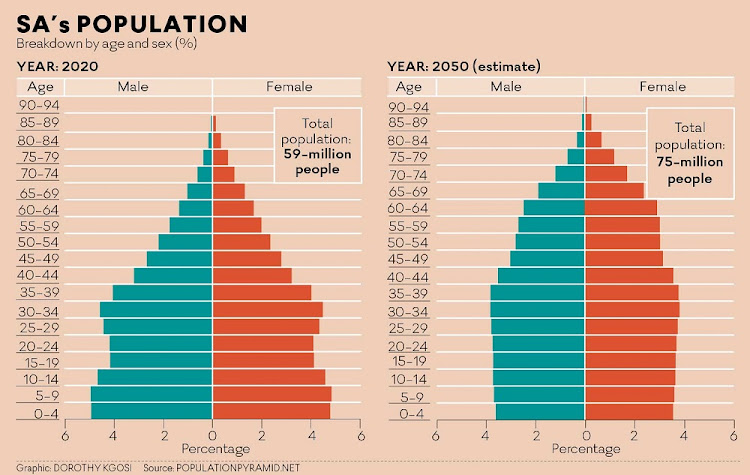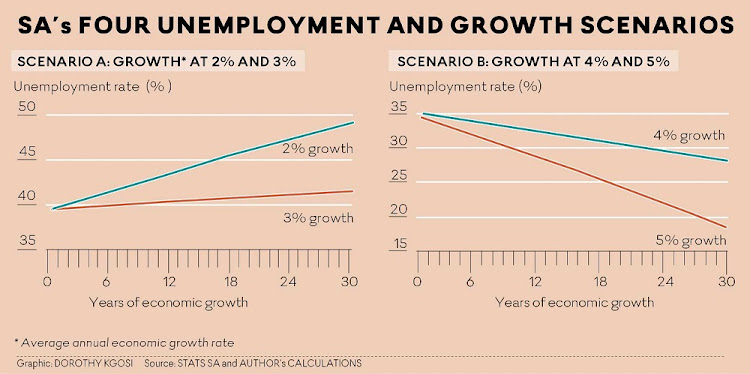A basic income grant will merely delay the poverty crisis and create long-term problems

A welfare state will collapse public finances and the narrow business sector that exists
SA’s triple challenges of high and unacceptable levels of unemployment, poverty and inequality continue to attract a multitude of proposed solutions. The real solutions over the long term are structural economic reforms as proposed by the Treasury, but these reforms lack the political backing necessary for speedy implementation.
In place of these urgent reforms, a permanent and universal basic income grant (BIG) is proposed as a necessary and immediate solution. It is simply assumed that the government is unable to create a conducive environment for a thriving business sector that can absorb labour. It is equally assumed that, in spite of the government’s inability to implement reforms quickly and efficiently, it can somehow guarantee the sustainability of what is now close to a Scandinavian welfare state.
Given the state of the political economy, the pace of economic reforms and state capacity, it is implausible that the government will implement economic reforms that will generate enough tax revenue to sustain rising social welfare costs. Policymakers need to look beyond the short-term political gains and consider the intergenerational sustainability of the state.
A different way of looking at the scale of challenges of an increasing welfare state is to examine SA’s population pyramid up to 2050, combined with the structure of the economy now. The numbers suggest a need to prioritise job creation through a thriving business sector and an enabling state ahead of a BIG, as the most impactful and sustainable solution to unemployment, poverty and inequality. Failing this, the short-term relief that will be derived from such a grant will be quickly reversed and replaced by a failed state, as the rising social wage will cannibalise and push out the innovators and entrepreneurs that keep the economy afloat.

The accompanying charts provide a view of the challenge that will face the country by 2050, which is just a generation away. Figure 1a and 1b depict SA’s population pyramids sourced from PopulationPyramid.net, which shows the age and sex structure of the SA population in 2020 and the projection in 2050.
These two charts show that SA’s population will increase by 16.2-million people, from 59.3-million in 2020 to 75.5-million in 2050. There will be 611,000 fewer young people under 14 years old, 2.3-million more youths aged 15 to 34, 10-million more adults between 35 and 64, and 4.7-million more people aged 65 and above. The working-age population (between 15 and 64) will increase by 12.3-million people over the 30-year period between 2020 and 2050. This is the natural progression of SA’s population dynamic, which cannot be easily altered in a democratic society that embraces human rights and self-determination, as opposed to China, which implemented a (now relaxed) one-child policy to limit population growth.
In simple terms, these statistics imply the following:
· About 42,000 more young people (0-19 years old) will be added to the child support grant, which currently has 14-million-odd dependants;
· About 4.7-million more people older than 64 will be added to the old-age grant, which currently has 3.7-million dependants; and
· About 12.3-million more working-age people (15-64 years old) will need new jobs, in addition to the 12.5-million who are currently unemployed and willing and able to work as at the third quarter of 2021.
Figure 2a and 2b show four unemployment rate scenarios under four average annual economic growth paths of 2% and 3%, which will not be able to reduce the unemployment rate, and 4% and 5%, which is the growth needed to reduce the unemployment rate over a 30-year period. The analysis makes use of the following simplified assumptions based on actual historical experience between March 2009 and June 2021 to derive the expected unemployment rates:
· Employment elasticity of growth = 0.44% (1% economic growth generates 0.44% employment growth)
· Total annual population growth of 1.4% and mortality rate of 0.87 (8.7 per 1,000)
· Annual non-working-age population growth of 0.8%
· Annual working-age population growth of 1.7%
· Annual labour force growth of 1.4%.
Based on these assumptions we model in a simple linear framework how labour markets will evolve over a 30-year period under the different economic growth scenarios. Based on historical experience, more complex frameworks have not shown markedly superior predictions of job growth given a particular level of economic growth. It is likely that the dynamism of the economy required to generate higher growth will mean the structure of the economy will change, and its labour absorption rate will also change. However, this does not detract from the main thrust of the argument made here.

Under a 2% annual economic growth rate it will take five years to generate fewer than 700,000 jobs and nearly a decade to generate 1.5-million jobs. The unemployment rate will rise to 36% and 38% over five years and 10 years respectively, and to 44% in 30 years’ time. A 3% average annual economic growth rate will generate 1-million jobs and 2.1-million jobs over five and 10 years. The unemployment rate stagnates at 35% for many years and marginally rises to 36% over 30 years. This implies that the current unemployment crisis will not be solved by a sub-3% economic growth rate.
Under 4% and 5% average annual economic growth the unemployment rate shrinks to 33% and 31% in five years, and further to 28% and 18% over a 30-year period. It therefore implies that SA must generate an average annual economic growth rate of at least 4% over the next 30 years to meaningfully reduce the unemployment rate, which will by implication reduce poverty.
Under current policy, by 2050 the number of child support grant dependants will increase 3% to 14.4-million, old-age grant dependants accelerate 127% to 8.4-million, and the unemployed working-age population nearly doubles to 24.7-million. There is a marginal change in the required fiscal commitments that will go to child support grants, a big burden on old age support, and a continued unemployment crisis at economic growth of less than 3%.
Proposed solutions such as a BIG, recently argued as an unhappy necessity by Michael Sachs (“Political courage is crucial ingredient in income support”, February 9) which assumes the state will be unable to create a conducive environment for a dynamic business sector that can ultimately generate jobs, will fail over the long term. The welfare state generated by the immediate need to relieve poverty will become the burden that will collapse public finance and the narrow business sector that exists.
A permanent BIG without the guarantee of structural economic reforms and higher economic growth will merely delay the crisis that a BIG is supposed to avert. Policymakers must respond to problems in society. But this does not mean the long-term problems that could be caused by short-term solutions should be an afterthought, and neither the intergenerational sustainability of society and the state. Policymakers must resist the urge to score quick political wins that jeopardise the survival of the state over the long term.
